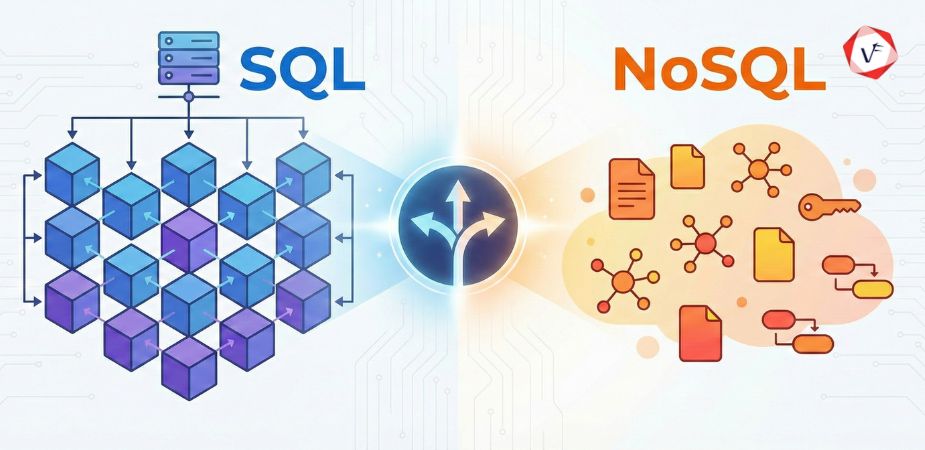- December 12, 2022 6:01 am
- by Ajanth
- December 12, 2022 6:01 am
- by Ajanth

A company's need to keep providing a competitive product or service will expand and change as time passes. Successful businesses must evolve as their market develops and the needs of their consumers change. That’s where a technology roadmap helps. In this blog, we are focusing on why a company needs a technology roadmap.
A technology roadmap is a demonstration or document that outlines the organization's strategy for adopting new technologies. They are developed to assist corporate leaders in planning and strategizing when and why specific technologies are implemented and even planning for technology that may become outdated.
If you're thinking about undergoing a digital transformation, your goal should be to establish a clear roadmap for transitioning to a new tech stack, work together with your entire organization to make it happen, and use their feedback to adjust your approach as needed.
You require a technology roadmap for several reasons. The very first benefit is that it keeps you focused. Without a solid understanding of the characteristics of the IT infrastructure, management cannot make wise business decisions. By carefully planning, you can lay out a strategy for the success of your entire business.
They are created with an idea of how long digital transformation or adoption efforts should take. When addressing new projects or initiatives with functional executives, use the roadmap as a reference point. It will provide a method to learn how to balance investment and project goals.
It will be used by the IT division to elevate project and resource planning. The roadmap will assist you to start visioning and planning well in advance and will support you in understanding resourcing requirements, software, vendor selection, and expenses.
The market may undergo rapid and unexpected changes. For businesses to sustain their productive growth and maintain a competitive advantage, new technologies and skills are required. A technology plan that offers precise instructions is crucial in these times to determine the best technological alternative and the ideal time to make changes. A roadmap aids in forecasting future market requirements using well-formed assumptions and data-based resources, which is crucial when making decisions.
A technological roadmap can help businesses to prioritize their R&D projects and cut out unimportant activities. An industry's collective efforts would be powerful enough to propel any transformational changes that call for significant resource input, such as highly skilled people, the most recent research, and financial support.
It helps to deal with challenges as well as boosts productivity and reduces expenses, all of which can have an immediate effect on the business. A roadmap shows all skills your team needs to develop and will also show you any extra features or services you're paying for. You can determine what's working and what isn't if every element of your digital workplace is written down. Then, you can eliminate or scale back any processes or systems that are ineffective, saving your company from the expenses incurred on those resources.
With an effective plan, system failures can be reduced. The technology roadmap makes this possible. It will also assess the requirement for security and privacy. The best method to deal with security issues and other risks that may obstruct corporate growth is to have a realistic plan.
Finally, having a clear document that keeps professionals informed about all the systems they are administering is immensely beneficial. The excellent overview is provided by an IT roadmap, which keeps both new and experienced team members on top of their duties.
As we discussed, a technology roadmap is a plan that directs the development of a company's technical infrastructure, arranges and prioritizes objectives, and collaborates to carry out business activities. Every business requires a perfect strategy that can deal with different contexts, whether it's facing problems, starting a new project, or just trying to stay competitive. The eight main components of a technological roadmap are listed below.
Both long-term and short-term goals the business or organization expects to accomplish should be included in your technology roadmap.
These are the new concepts made possible by the use of improved technology. New system features include systems ranging from CRM to cybersecurity and beyond.
Release plans will be scheduled months in advance and are normally predictable. Release plans must be delivered throughout the company or organization.
Milestones serve as performance benchmarks to make sure the company or organization is on course to achieve its desired results. They are commonly tied to certain dates.
Resources are the time, money, activity, and employees required to keep up with the project.
A training process is necessary before deploying any new technology to make sure that team members are effectively using it. Training time should always be included in your technology roadmap. Updates to existing systems as well as the onboarding of new systems both require training.
The potential internal or external problems that could obstruct the successful adoption of new technology are referred to as risk factors. Risk considerations can be market changes that influence the requirements and objectives of a business or organization, limitations in the current technologies, difficulties adopting the new technology, etc.
In order to keep all key stakeholders updated on the deployment of the new technology, status reports are required.
To conclude, we have discussed the reasons why a company needs a technology roadmap through this blog. A technology roadmap aids in the understanding of an organization's strategies and gives an understanding of the necessities of the organization as well as the technology required to achieve those goals. It outlines how technological advancements will assist the organization in achieving its short- and long-term outcomes. The businesses that foresee their industry's development and establish solid preparations in response to it will fare the best through these changes. A company can withstand hardships and can also grow through them with a clear strategy and proper planning. That’s where a technology roadmap plays a role.
Guaranteed Response within One Business Day!

What is Digital Twin Technology?

What are WebAssembly (WASM) Applications?
Code Review Best Practices: Complete Guide for 2026

Database Selection Guide: SQL vs NoSQL
AI Agents in Enterprise Software: How Autonomous AI is Transforming Business Operations